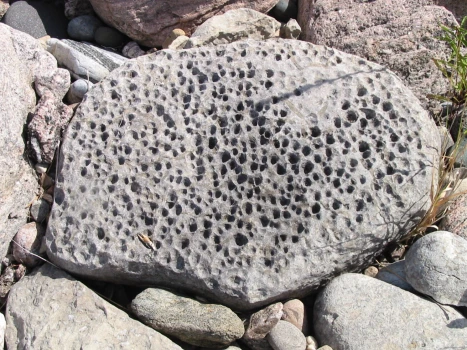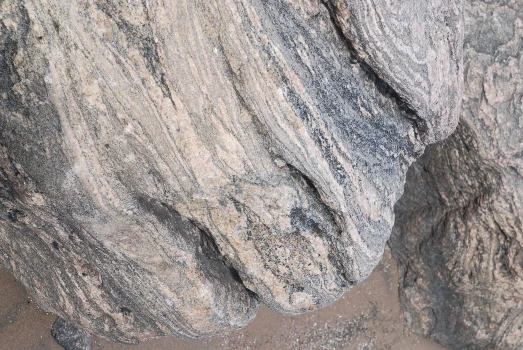Geology Challenge
Stop #5: The Wind and the Weathering
Weathering processes involve the breaking down of rocks, soils, and minerals. Mechanical processes involve physically breaking down large material into smaller parts.
This can include a glacier scraping the surface and removing fragments or water carving out shorelines, as well as freeze-thawing which cracks or breaks rock along fissures where water freezes.
The most obvious example of mechanical or physical weathering can be found in a handful of sand. What is the dominant shape? The rock fragments or ‘lithic grains’ are rounded by the abrasive pounding of wave action.
Take a look at the bowling ball sized cobble at the water’s edge; it too is rounded smooth.
Challenge: Old Stones
Look carefully at the rock “face” of some of the gneissic boulders around you which have had some of their mineral content eroded exaggerating the rock’s physical features. I’ve just seen a face! Find another “stone face” and challenge one of your group members to find it.
Next Up: Head to Stop #6
- Head back toward the Beach Trail and walk approximately 130 meters west along the trail towards 3rd Beach.
- Look for the beach entrance marked by a “No Pets Beyond This Point” sign, then continue approximately 50 meters west along the beach front towards a stream.
- Find the wooden post labelled Stop #6, and click on Next Up: Stop #6 below.


